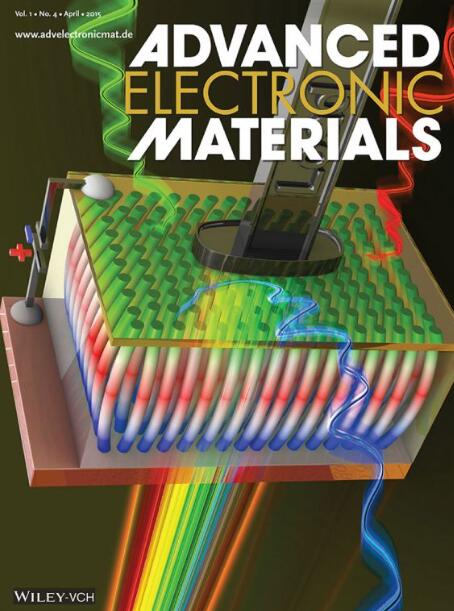Resistance Drift of Phase Change Materials Beyond the Power Law
IF 5.3
2区 材料科学
Q2 MATERIALS SCIENCE, MULTIDISCIPLINARY
引用次数: 0
Abstract
Phase change materials (PCMs) are used in fast, non-volatile memory applications, where the information is encoded in the electrical contrast between a conductive crystalline and a resistive amorphous state. In principle, the resistance of a single device can be programmed in a near continuous manner by tuning the amorphous to crystalline volume ratio. This makes PCMs interesting for novel analog computing architectures. Here, a key challenge remains in either mitigating or even utilizing a characteristic of the amorphous state: Its resistance evolves with time. Because this so-called resistance drift is captured on typical experimental timescales by an otherwise featureless power law, it can be described by a variety of physical models, leaving the true underlying microscopic origin obscured. Using both electrical and ultrafast optical heating pulses, the resistance drift is resolved over 11 orders of magnitude in time down to the first nanoseconds after formation of the amorphous state. Clear deviations from the power law both on short timescales below 1 µs and, at elevated temperatures, also on longer timescales of seconds are observed. The observations are discussed in view of common drift models. Moreover a unifying energy landscape picture is offered as an interpretation of the experimental evidence.

相变材料(PCMs)用于快速,非易失性存储器应用,其中信息在导电晶体和电阻非晶态之间的电对比中编码。原则上,单个器件的电阻可以通过调整非晶与晶体的体积比以接近连续的方式进行编程。这使得pcm对新颖的模拟计算体系结构很感兴趣。在这里,一个关键的挑战仍然是如何减轻甚至利用非晶态的特性:它的电阻随着时间的推移而变化。因为这种所谓的电阻漂移是在典型的实验时间尺度上通过一个无特征的幂律来捕获的,所以它可以用各种物理模型来描述,从而使真正潜在的微观起源变得模糊。利用电脉冲和超快光加热脉冲,在非晶态形成后的第一个纳秒内,电阻漂移被分解了11个数量级。在低于1µs的短时间尺度上,在高温下,在较长的时间尺度(秒)上,都观察到与幂律的明显偏差。根据常见的漂移模型对观测结果进行了讨论。此外,还提供了一个统一的能量景观图作为对实验证据的解释。
本文章由计算机程序翻译,如有差异,请以英文原文为准。
求助全文
约1分钟内获得全文
求助全文
来源期刊

Advanced Electronic Materials
NANOSCIENCE & NANOTECHNOLOGYMATERIALS SCIE-MATERIALS SCIENCE, MULTIDISCIPLINARY
CiteScore
11.00
自引率
3.20%
发文量
433
期刊介绍:
Advanced Electronic Materials is an interdisciplinary forum for peer-reviewed, high-quality, high-impact research in the fields of materials science, physics, and engineering of electronic and magnetic materials. It includes research on physics and physical properties of electronic and magnetic materials, spintronics, electronics, device physics and engineering, micro- and nano-electromechanical systems, and organic electronics, in addition to fundamental research.
 求助内容:
求助内容: 应助结果提醒方式:
应助结果提醒方式:


